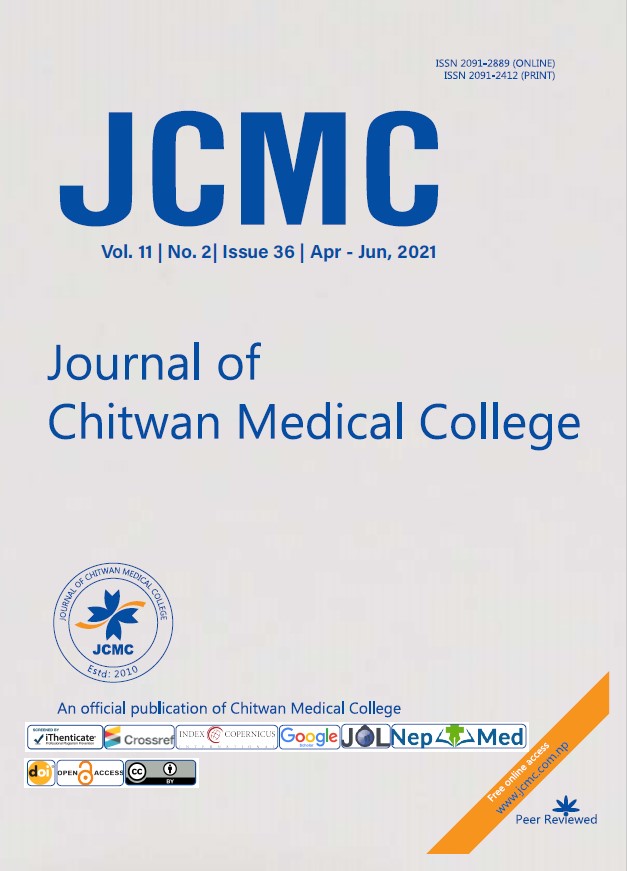Surgical outcome of the superior mesenteric artery first technique combining posterior and uncinate process approach to pancreaticoduodenectomy for the pancreatic head and the periampullary cancer
Keywords:
Outcome; Pancreaticoduodenectomy; Posterior; Surgical; Uncinate process.Abstract
Background: Pancreaticoduodenectomy is the only curative treatment for periampullary and head of pancreas cancers. Various approaches have been described as the superior mesenteric artery (SMA) first technique. This study aimed to report the surgical outcome of the SMA first technique combining posterior and uncinate process approach to pancreaticoduodenectomy.
Methods: This retrospective study was done at the Department of Surgical Oncology at BP Koirala Memorial Cancer Hospital. The data was collected from January 2015 to September 2020. All the patients underwent pancreaticoduodenectomy for pancreatic head cancer and periampullary cancer with the technique combining posterior and uncinate process approaches.
Results: A total of 85 patients underwent pancreaticoduodenectomy with 42.4% male and 57.6% female. Fifty-nine (69.4%) cases were classified as resectable and 26 (30.6%) as borderline resectable. The median operative time was 300 minutes. The median intraoperative blood loss was 391ml. Intra-operative blood transfusion was done in 8.5%. The median total number of dissected lymph nodes was 13. The postoperative pancreatic fistula was seen in 8 patients while 4 patients had a post-pancreatectomy hemorrhage. Delayed gastric emptying was seen in 12 patients. There were overall 8 (9.4%) in-hospital mortality. R0 resection was achieved in 84 patients (98.82%).
Conclusions: The combined posterior and uncinate process approach SMA first technique for pancreaticoduodenectomy is a safe and standard technique. It decreases intraoperative blood loss, total operative time, and increases R0 resection compared to posterior or uncinate process approach only. It plays a key role in lowering the postoperative complication rate.




